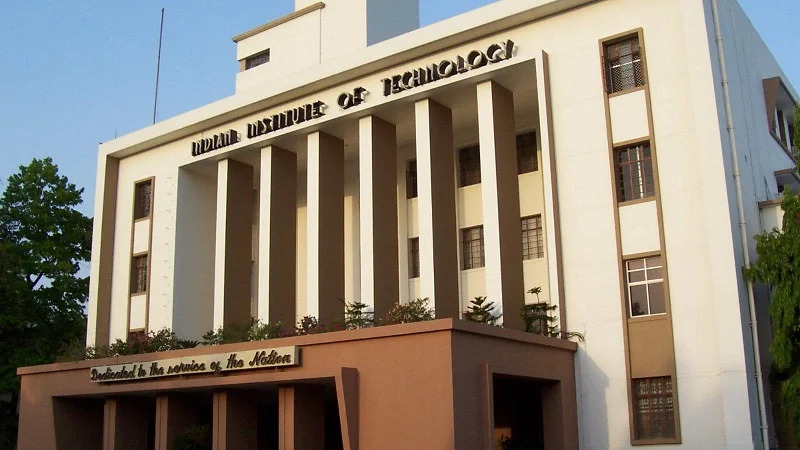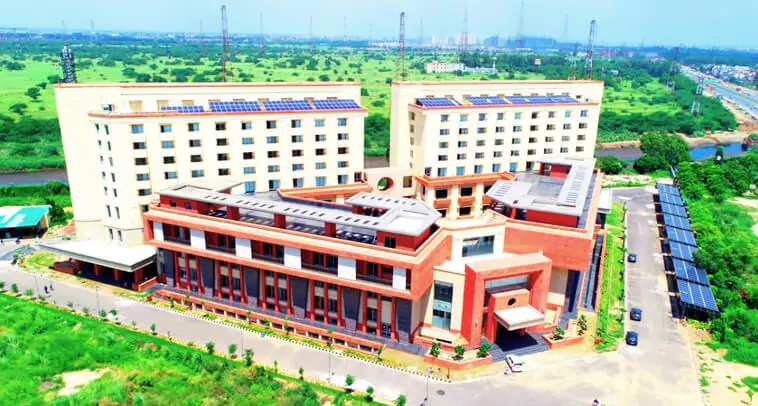Choosing between the Indian Institutes of Technology (IITs) and the National Institutes of Technology (NITs) is a pivotal decision that shapes the academic and professional journey of aspiring engineers. These premier institutions share a commitment to engineering education but differ significantly in various aspects. While IITs stand as global benchmarks of excellence, NITs boast a strong academic foundation with a focus on regional impact. In this exploration of the differences between IIT and NIT, we delve into admission processes, academic reputation, infrastructure, faculty expertise, alumni networks, placements, research opportunities, and campus culture. Understanding these distinctions becomes crucial for students seeking an institution aligned with their aspirations and goals.
Notable Differences: IITs and NITs
| Aspect |
Indian Institutes of Technology (IIT) |
National Institutes of Technology (NIT) |
| Establishment |
IITs were established in the 1950s and 1960s, with the first being IIT Kharagpur in 1951. |
NITs originated as Regional Engineering Colleges (RECs) and were later transformed into NITs in 2002. |
| Autonomy |
IITs enjoy a high degree of autonomy in academic and administrative matters. |
NITs also have autonomy but to a slightly lesser extent than IITs. |
| Admission Process |
Admission to IITs is based on the Joint Entrance Examination (JEE) Advanced, following JEE Main. |
NITs admit students based on the JEE Main examination results through centralized counseling (JoSAA/CSAB). |
| Number of Institutes |
There are 23 IITs located across various states in India. |
There are 31 NITs distributed across different states. |
| Academic Focus |
IITs are known for their strong emphasis on academic rigor and research. |
NITs focus on academic excellence, with a balanced approach to teaching and research. |
| Global Recognition |
IITs have gained international recognition and are considered among the top engineering institutes globally. |
NITs have a solid reputation nationally and are recognized for their contributions to technical education. |
| Alumni Network |
IITs boast influential and globally recognized alumni networks, with graduates holding key positions in various industries worldwide. |
NITs have strong alumni networks, though their global reach might not be as extensive as that of IITs. |
| Research Opportunities |
IITs are known for extensive research facilities and a focus on cutting-edge technologies. |
NITs provide research opportunities, but their research output may be comparatively smaller than IITs. |
| Campus Size and Infrastructure |
IITs typically have larger campuses with state-of-the-art infrastructure. |
NITs have well-equipped campuses but may be slightly smaller in size compared to IITs. |
| Industry Connections |
IITs often have strong ties with industries and global corporations, leading to excellent placement opportunities. |
NITs maintain connections with industries, providing good placement prospects for students. |
| Overall Perception |
IITs are perceived as the top engineering institutes in India, with a global reputation for academic excellence. |
NITs are highly regarded institutions, providing quality education and contributing significantly to the technical workforce. |
Indian Institutes of Technology (IIT)

The Indian Institutes of Technology (IITs) are a network of premier autonomous public technical and research universities in India. Renowned for their excellence in engineering, technology, and sciences, IITs are considered among the most prestigious institutions for higher education in the country. Established with the mission to advance technological education, foster research, and produce skilled professionals, each IIT operates independently and is known for its rigorous academic curriculum, cutting-edge research facilities, and a strong emphasis on innovation. IITs play a pivotal role in shaping the technological landscape of India and have gained international recognition for their contributions to science, engineering, and technological advancements.
History of Indian Institutes of Technology (IIT)
The history of the Indian Institutes of Technology (IITs) dates back to the post-independence era in India when there was a pressing need for technological development and skilled professionals in the field of engineering. The establishment of IITs is closely linked to the vision of India's first Prime Minister, Jawaharlal Nehru, who foresaw the crucial role of technology in nation-building.
The first IIT, IIT Kharagpur, was founded in 1951. It was a collaborative effort involving the governments of India, the United States, and the Soviet Union. A team of experts from these countries contributed to the establishment and early development of the institute.
Subsequently, IIT Bombay and IIT Madras were founded in 1958, followed by IIT Kanpur in 1959. Over the years, the IIT system expanded with the creation of additional institutes in various regions of India, including Delhi, Guwahati, Roorkee, Bhubaneswar, Gandhinagar, Hyderabad, Jodhpur, Patna, and Ropar.
The IITs were designed to be autonomous institutions with a focus on academic and research excellence. They were granted the status of "Institutes of National Importance" by the Government of India, underscoring their critical role in the country's development.
The IITs have played a significant role in producing some of India's brightest minds, contributing to research, technological advancements, and innovation. Over the years, they have evolved into hubs for cutting-edge research, entrepreneurship, and global collaborations, earning recognition as premier engineering and technology institutions both nationally and internationally. The IIT system continues to be a cornerstone of India's educational landscape, symbolizing a commitment to excellence in engineering and technology.
Admmission Requirement Of IIT
Admission to the Indian Institutes of Technology (IITs) is primarily based on the Joint Entrance Examination (JEE). Here are the key requirements:
- JEE Main and Advanced: Candidates must qualify for JEE Main and subsequently JEE Advanced, which assess their proficiency in Physics, Chemistry, and Mathematics.
- Educational Qualifications: Candidates should have completed 10+2 with Physics, Chemistry, and Mathematics. The minimum percentage varies, and eligibility criteria are set by each IIT.
- Age Limit: Generally, candidates should be born on or after October 1, 1997, with age limit relaxations for certain categories.
- Attempts: Candidates can attempt JEE Advanced a maximum of two times in consecutive years.
- Reservation: IITs follow a reservation policy for SC, ST, OBC, and EWS categories.
- Foreign Nationals and PIO/OCI: Foreign Nationals, as well as PIO and OCI cardholders, are eligible for IIT admission.
As admission criteria may vary among IITs, candidates should refer to specific institute guidelines and the latest JEE examination updates.
National Institutes of Technology (NIT)

The National Institutes of Technology (NITs) are a group of premier autonomous public technical and research universities in India. Established by the Government of India with the goal of advancing technological education and research, NITs are renowned for their excellence in engineering, technology, and applied sciences. These institutes were originally known as Regional Engineering Colleges (RECs) before being elevated to the status of National Institutes of Technology. NITs are distributed across various states, and each institute operates autonomously, offering undergraduate, postgraduate, and doctoral programs in engineering, technology, and related fields. NITs are recognized for their rigorous academic curriculum, state-of-the-art infrastructure, and a commitment to producing skilled professionals and fostering innovation in science and technology.
History of National Institutes of Technology (NIT)
The National Institutes of Technology (NITs) in India have a rich history rooted in the nation's post-independence efforts to bolster technical education. Originating as Regional Engineering Colleges (RECs) during the 1950s and 1960s, these institutions were envisioned to meet the rising demand for engineering expertise. In a landmark development in 2002, the government elevated RECs to the prestigious status of National Institutes of Technology, aligning them with the esteemed Indian Institutes of Technology (IITs). This elevation granted NITs increased autonomy, enabling them to shape their academic and administrative directions.
Since their transformation, NITs have played a vital role in the technical education landscape of India. The adoption of a standardized admission process, the Joint Entrance Examination (JEE), streamlined the selection of students based on merit, ensuring a fair and transparent system. Over the years, the NIT system has expanded to accommodate the growing need for quality technical education across various states. NITs are recognized not only for their academic rigor but also for their commitment to fostering research, innovation, and global collaborations.
Today, NITs stand as premier institutions, contributing significantly to India's technological prowess. They serve as centers of excellence, producing skilled engineers and technologists who make substantial contributions to industry and research. With a continued focus on academic excellence and adaptability to emerging challenges, NITs remain pivotal in shaping the future of technical education in India.
Admmission Requirement Of NIT
Admission to the National Institutes of Technology (NITs) for undergraduate programs is primarily based on the Joint Entrance Examination (JEE) Main. Key requirements include:
- Completion of 10+2 with Physics, Chemistry, and Mathematics.
- Attaining a certain rank in JEE Main.
- Participation in centralized counseling (JoSAA/CSAB).
- Meeting specific eligibility criteria for each NIT.
- Reservation policies for different categories are followed.
- Provision for admission of Foreign Nationals, PIO, and OCI candidates.
Conclusion
While both the Indian Institutes of Technology (IITs) and the National Institutes of Technology (NITs) are esteemed institutions contributing significantly to technical education in India, they differ in several key aspects. IITs, with their longer history and higher degree of autonomy, have achieved global recognition for academic excellence, extensive research, and influential alumni networks. On the other hand, NITs, emerging from the transformation of Regional Engineering Colleges, maintain a strong focus on academic rigor and practical application, contributing notably to the national technical workforce. The choice between IITs and NITs depends on individual preferences, academic goals, and the specific strengths each institution offers, ultimately reflecting the diverse and rich landscape of technical education in India.
 The Indian Institutes of Technology (IITs) are a network of premier autonomous public technical and research universities in India. Renowned for their excellence in engineering, technology, and sciences, IITs are considered among the most prestigious institutions for higher education in the country. Established with the mission to advance technological education, foster research, and produce skilled professionals, each IIT operates independently and is known for its rigorous academic curriculum, cutting-edge research facilities, and a strong emphasis on innovation. IITs play a pivotal role in shaping the technological landscape of India and have gained international recognition for their contributions to science, engineering, and technological advancements.
The Indian Institutes of Technology (IITs) are a network of premier autonomous public technical and research universities in India. Renowned for their excellence in engineering, technology, and sciences, IITs are considered among the most prestigious institutions for higher education in the country. Established with the mission to advance technological education, foster research, and produce skilled professionals, each IIT operates independently and is known for its rigorous academic curriculum, cutting-edge research facilities, and a strong emphasis on innovation. IITs play a pivotal role in shaping the technological landscape of India and have gained international recognition for their contributions to science, engineering, and technological advancements.
 The National Institutes of Technology (NITs) are a group of premier autonomous public technical and research universities in India. Established by the Government of India with the goal of advancing technological education and research, NITs are renowned for their excellence in engineering, technology, and applied sciences. These institutes were originally known as Regional Engineering Colleges (RECs) before being elevated to the status of National Institutes of Technology. NITs are distributed across various states, and each institute operates autonomously, offering undergraduate, postgraduate, and doctoral programs in engineering, technology, and related fields. NITs are recognized for their rigorous academic curriculum, state-of-the-art infrastructure, and a commitment to producing skilled professionals and fostering innovation in science and technology.
The National Institutes of Technology (NITs) are a group of premier autonomous public technical and research universities in India. Established by the Government of India with the goal of advancing technological education and research, NITs are renowned for their excellence in engineering, technology, and applied sciences. These institutes were originally known as Regional Engineering Colleges (RECs) before being elevated to the status of National Institutes of Technology. NITs are distributed across various states, and each institute operates autonomously, offering undergraduate, postgraduate, and doctoral programs in engineering, technology, and related fields. NITs are recognized for their rigorous academic curriculum, state-of-the-art infrastructure, and a commitment to producing skilled professionals and fostering innovation in science and technology.
 The Indian Institutes of Technology (IITs) are a network of premier autonomous public technical and research universities in India. Renowned for their excellence in engineering, technology, and sciences, IITs are considered among the most prestigious institutions for higher education in the country. Established with the mission to advance technological education, foster research, and produce skilled professionals, each IIT operates independently and is known for its rigorous academic curriculum, cutting-edge research facilities, and a strong emphasis on innovation. IITs play a pivotal role in shaping the technological landscape of India and have gained international recognition for their contributions to science, engineering, and technological advancements.
The Indian Institutes of Technology (IITs) are a network of premier autonomous public technical and research universities in India. Renowned for their excellence in engineering, technology, and sciences, IITs are considered among the most prestigious institutions for higher education in the country. Established with the mission to advance technological education, foster research, and produce skilled professionals, each IIT operates independently and is known for its rigorous academic curriculum, cutting-edge research facilities, and a strong emphasis on innovation. IITs play a pivotal role in shaping the technological landscape of India and have gained international recognition for their contributions to science, engineering, and technological advancements.
 The National Institutes of Technology (NITs) are a group of premier autonomous public technical and research universities in India. Established by the Government of India with the goal of advancing technological education and research, NITs are renowned for their excellence in engineering, technology, and applied sciences. These institutes were originally known as Regional Engineering Colleges (RECs) before being elevated to the status of National Institutes of Technology. NITs are distributed across various states, and each institute operates autonomously, offering undergraduate, postgraduate, and doctoral programs in engineering, technology, and related fields. NITs are recognized for their rigorous academic curriculum, state-of-the-art infrastructure, and a commitment to producing skilled professionals and fostering innovation in science and technology.
The National Institutes of Technology (NITs) are a group of premier autonomous public technical and research universities in India. Established by the Government of India with the goal of advancing technological education and research, NITs are renowned for their excellence in engineering, technology, and applied sciences. These institutes were originally known as Regional Engineering Colleges (RECs) before being elevated to the status of National Institutes of Technology. NITs are distributed across various states, and each institute operates autonomously, offering undergraduate, postgraduate, and doctoral programs in engineering, technology, and related fields. NITs are recognized for their rigorous academic curriculum, state-of-the-art infrastructure, and a commitment to producing skilled professionals and fostering innovation in science and technology.





